During our first stay where we spent 5 days to discover Hong Kong, one of these days consisted of visiting the Nan Lian gardens, coupled with the Chi Lin nunnery. We then went to the Che Kung temple, particularly appreciated by the Thais.
Beyond the beauty of the garden itself, it is also to be honest because I did not want to overload the other article with photos. As that day I took quite a few, I wanted to share a minimum of them with you (as usual you know well 😉 ), so this goes through a dedicated article.
Nan Lian Gardens
It was unfortunately in the rain that we discovered the Nan Lian gardens (fortunately, we were equipped since we had just come before going to a shopping center and bought a good k-way). Located in the heart of the Diamond Hill district. These are located in a district just north of the old airport which, like a good part of Hong Kong, is made up of a group of buildings that contrast quite a bit with this garden.
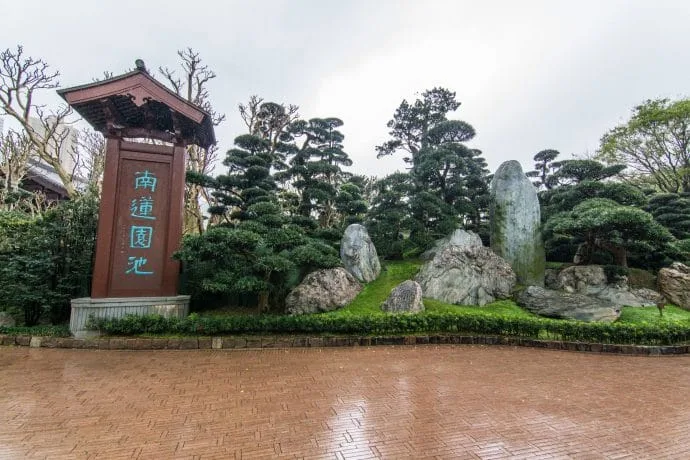

And contrary to my impression, it is not really a Japanese garden but a Chinese one, even if these may have been inspired by Japanese jewels. More precisely, it is a garden composed in the style of the Tang dynasty (between the beginning of the 6th and the beginning of the 10th century).
The garden is "wedged between a highway and a road that circles the neighborhood, with a bridge passing over a crossroads. I specify this because the Nan Lian gardens really do act as a kind of green oasis in the middle of this crazy urbanization and the entrance that we take, under the bridge therefore, did not foreshadow such developments behind it.
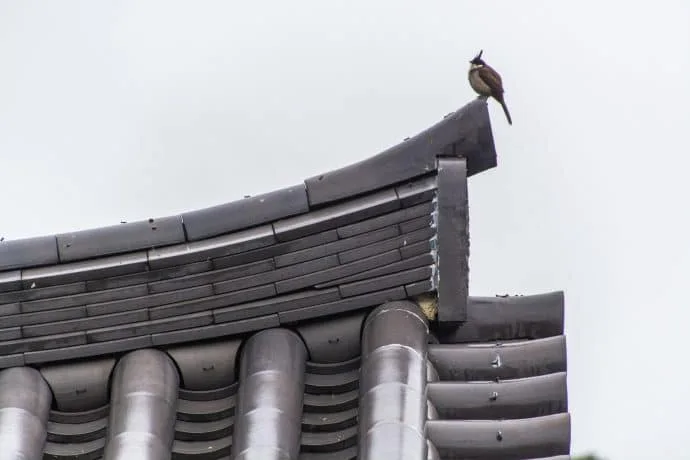
A bit like Feng Shui, nothing is left to chance. All these arrangements, which in absolute terms give an impression of zenitude, are made according to a precise method and rules. This is why each tree is carefully pruned, the bodies of water are filled with Japanese fish (the famous koi carp), the smallest stones are not placed at random. Everything is harmony in this garden which occupies 3,5 hectares.
Since it was pouring with rain, we decided to start by visiting the permanent exhibition because we would be sheltered. It is located in a wooden building in front of which stands a series of bonsai trees, on the northwest corner of the garden.
The exhibition is dedicated to Chinese wooden architecture in one building but also to the types of ornamental rocks used in the garden and potted plants in another. Once the rooms were visited, we continued the walk in a clockwise direction.
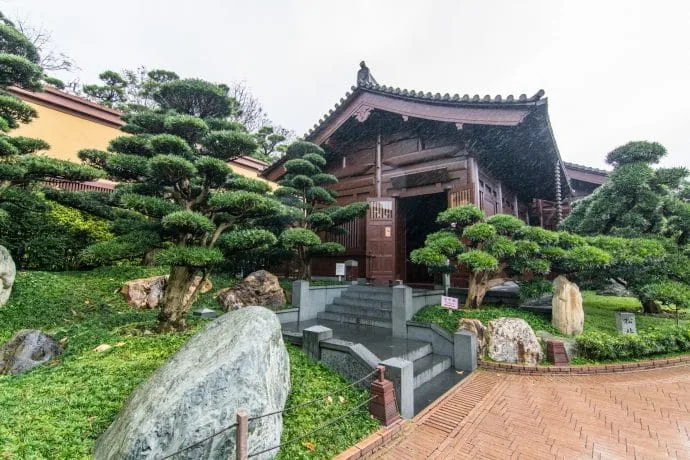
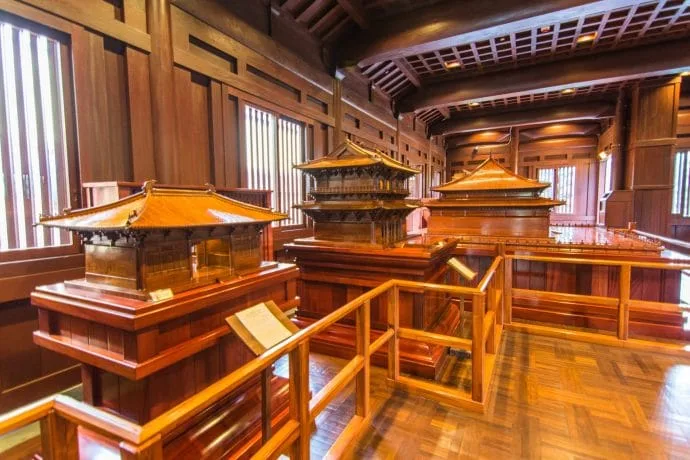
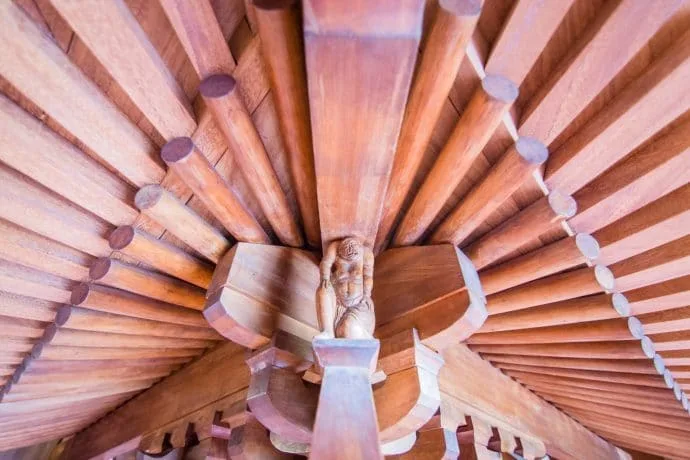
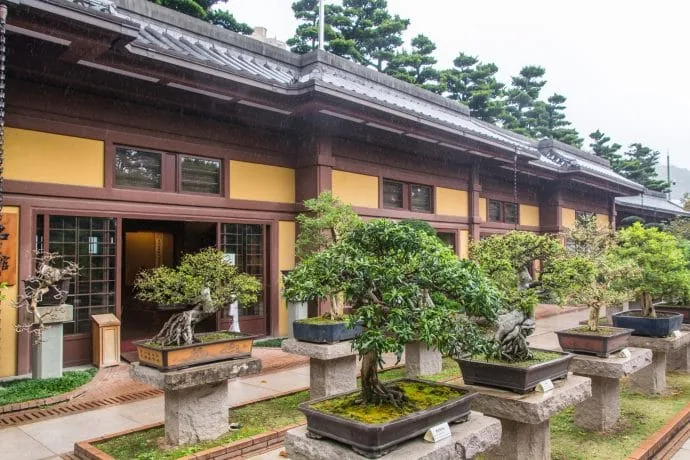

We then pass in front of the magnificent golden pagoda (this was before going to see the Kinkaku-ji, the famous golden pavilion in Kyoto). This pagoda faces a terrace and footbridge crossing the road below to reach the Chi Lin nunnery. Here, this pagoda, or rather pavilion, is called "pavilion of absolute perfection, no less...
Another building further on, next to which falls an artificial waterfall (this is not a metaphor for talking about rain...) allows you to eat (tasting vegetarian dishes only) or stroll in the tea room. Shortly after, you arrive on a wooden terrace, overlooking the fish pond with a view of a good part of the garden.
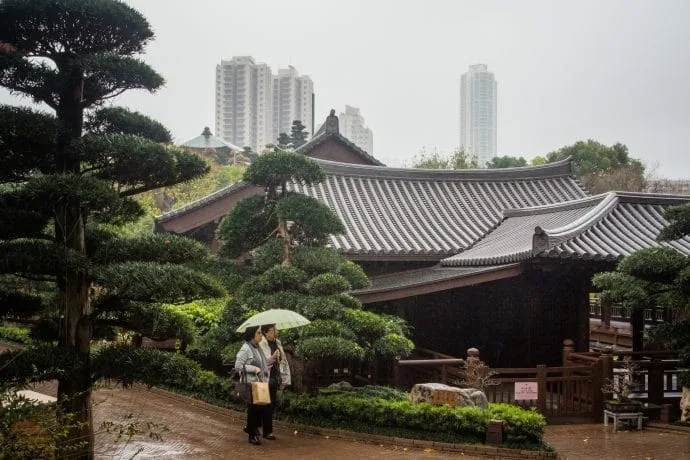
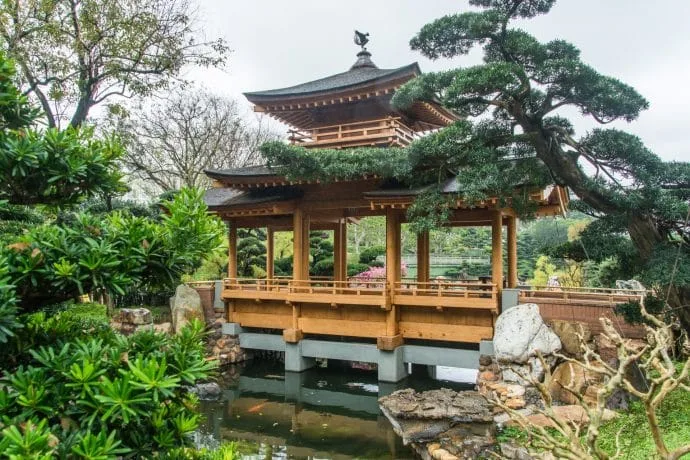
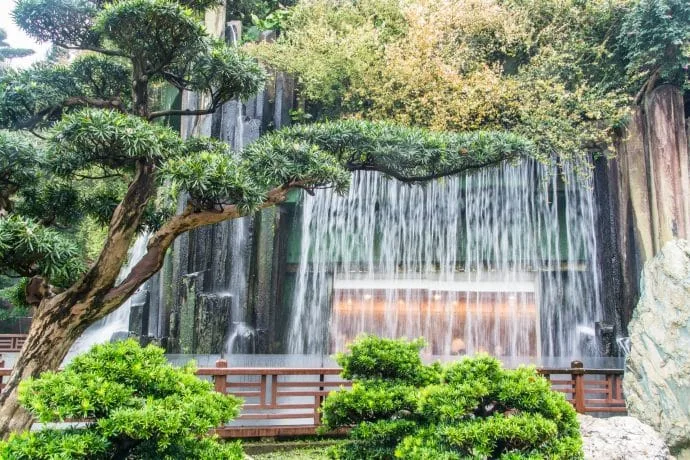
It was at this point that the rain began to give us a little respite. This is how I was able to appreciate the colors around us a little more (it also suited me to take better photos). From where we were, we could see the roof of the main building of the convent opposite.
But that's not for now. Time to take a look at a building further away, like a sort of covered corridor resembling a cloister. In the middle are ornamental rocks as well as trees. We finished the loop of the garden by turning around the golden pavilion, which we will have gone around before returning to the terrace and finally crossing towards the Chi Lin convent.
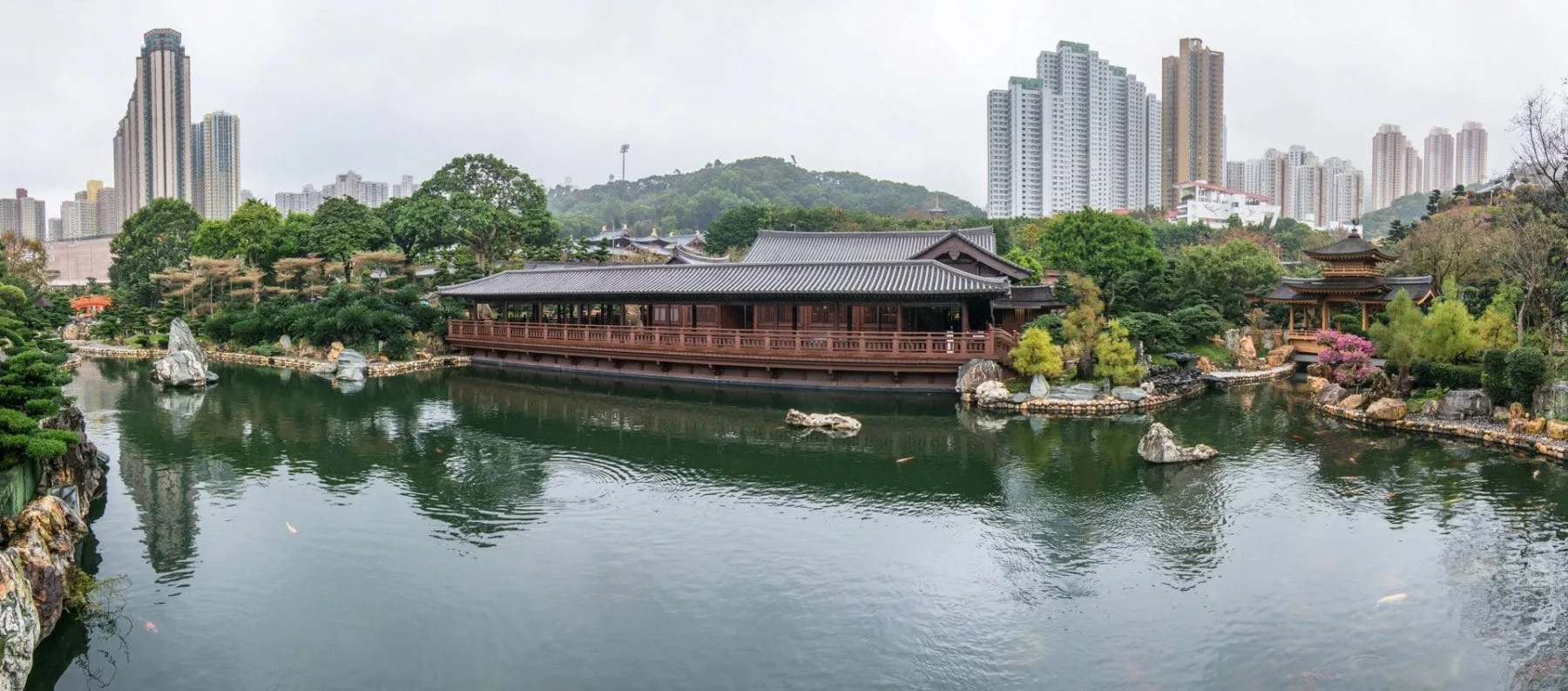
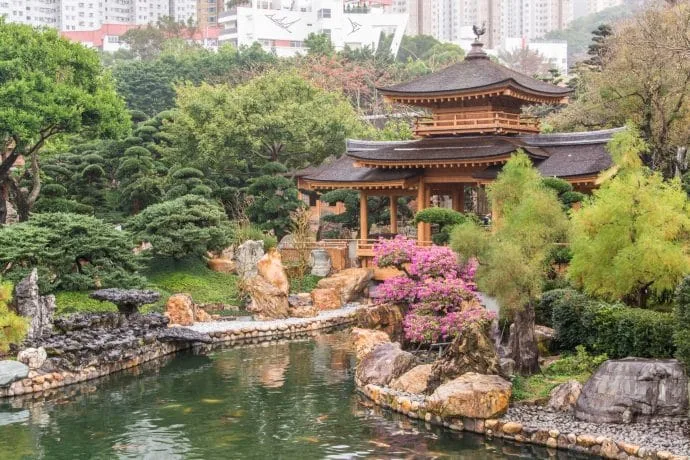

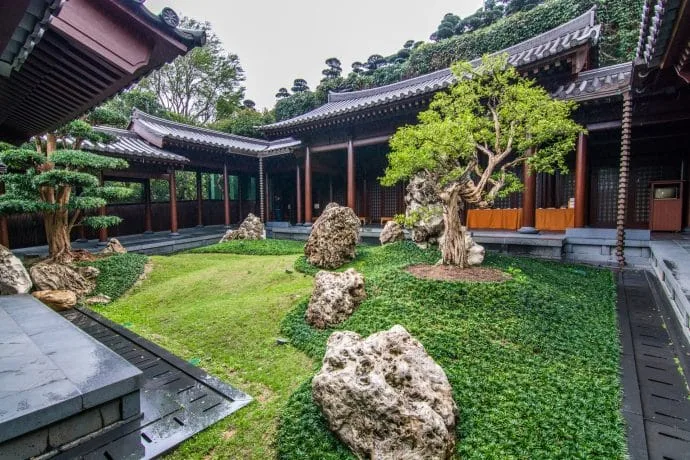
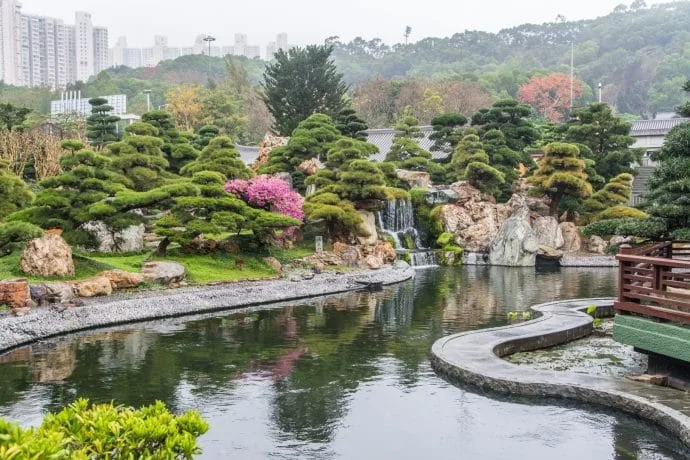
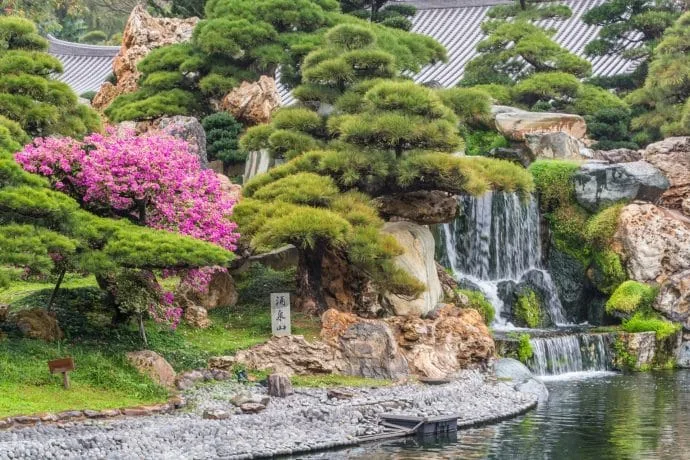
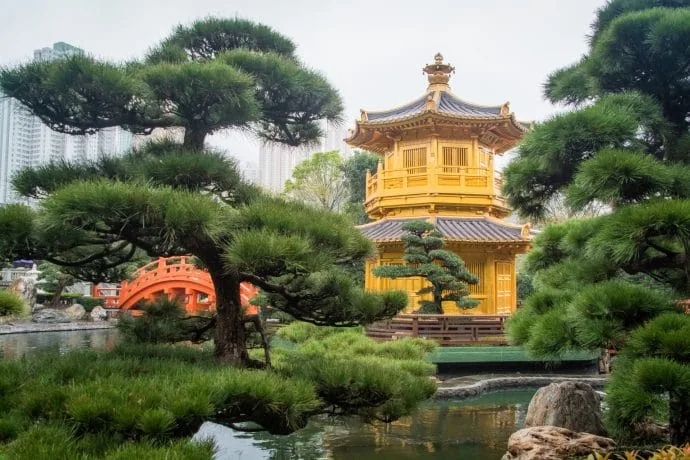
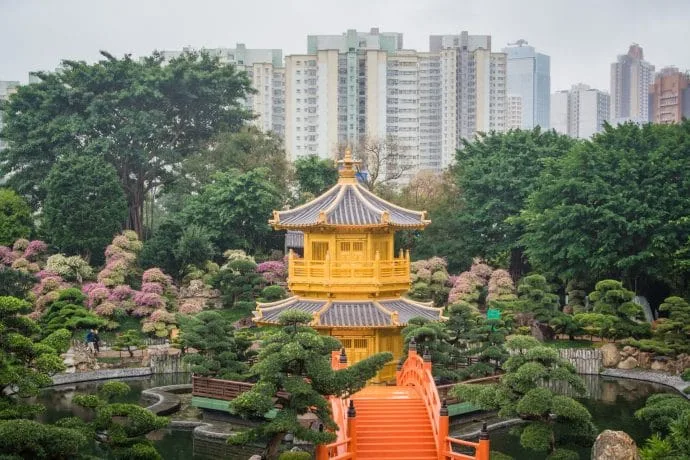
Chi Lin Nunnery
I had started by translating "nunnery" into monastery, but the function is not quite the same, that's why I concretely use the word "convent".
The Chi Lin Convent dates from 1934. Although it is "recent", it has an older style, adopted in 1990 during its renovation, once again taking up the style of the Tang dynasty (might as well be consistent). Wood predominates and the architecture with its curved roofs does not leave you indifferent.

These buildings house Buddhist relics. In its rooms, we see many statues, made of wood, gold or clay, representing various bodhisattvas (a sort of Buddha in the making) or ancient Buddha. As we couldn't take pictures inside, I can't show you anything and so I lingered longer in the exterior courtyards.
In a first courtyard, there is a set of 4 lotus ponds, distributed symmetrically. This gives a beautiful overall view of the main part, which is raised compared to the rest. The contrast between this religious place and the towers which protrude behind is striking.
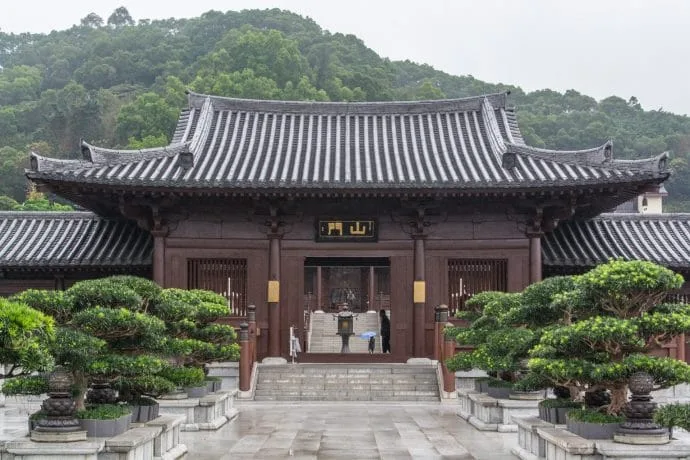

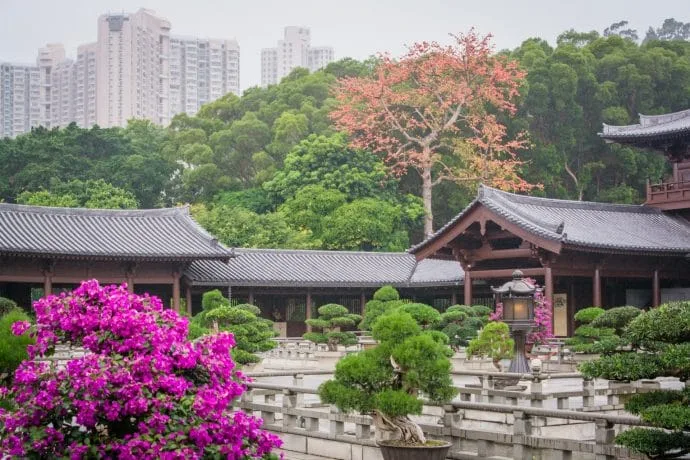
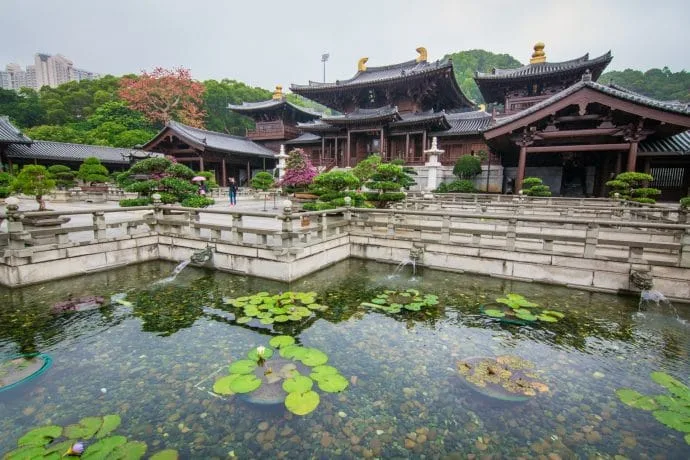
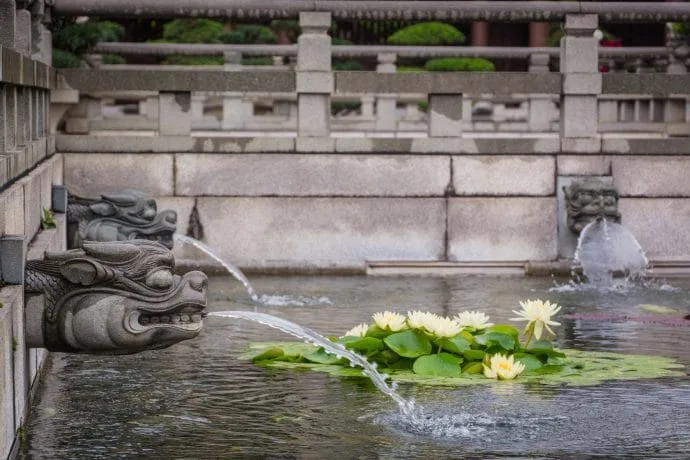
I also dwell on the very particular, but in this case very Chinese design of the roofs and tiles. The particularity being that the last ones at the edge of the roof are decorated and adorned with small statues, the detail, right down to the end.
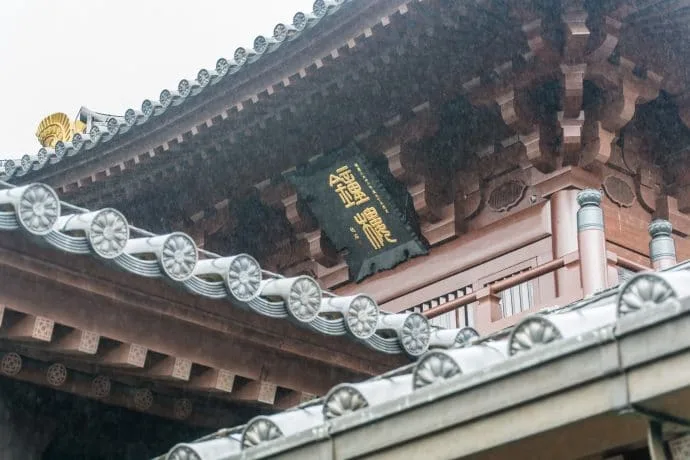
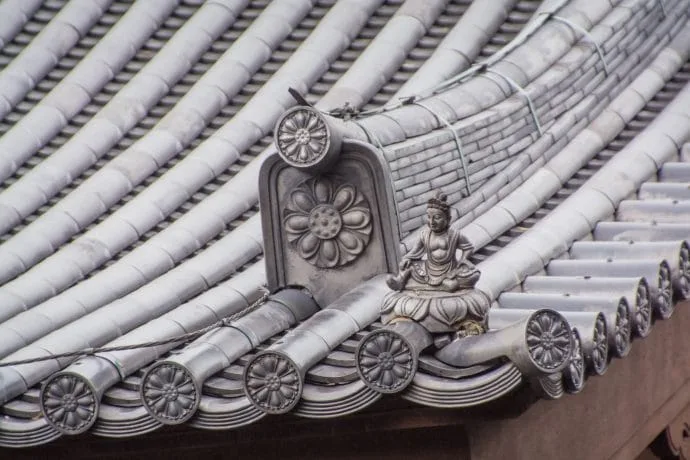
The very name of the temple is found on the doors, as a knocker. Indeed, Chi Lin (also spelled Qi Lin) is a Chinese mythological animal, associated with a sign of good omen and also protection. The Chi Lin is represented with a sort of head halfway between the lion and the dragon, with horns on the head and flames as a mane.
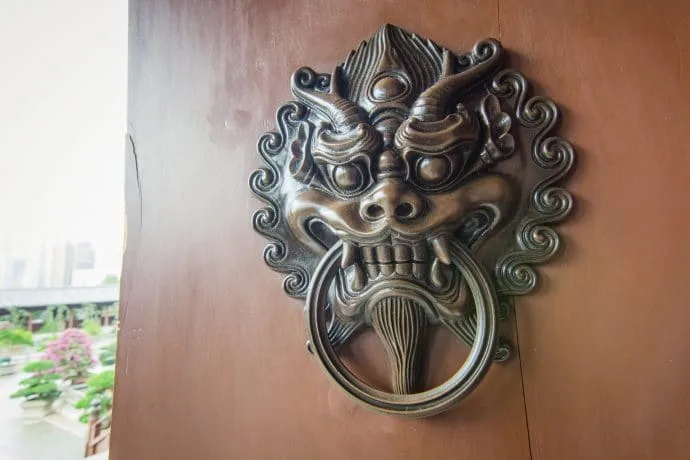
The second courtyard is filled with 4 mini gardens, with lawn and perfectly trimmed shrubs. The view of the temple with the first courtyard and the buildings in the background is very beautiful despite the rain that is back. It is then time for us to move to the metro and go to our next stop, the Che Kung temple.
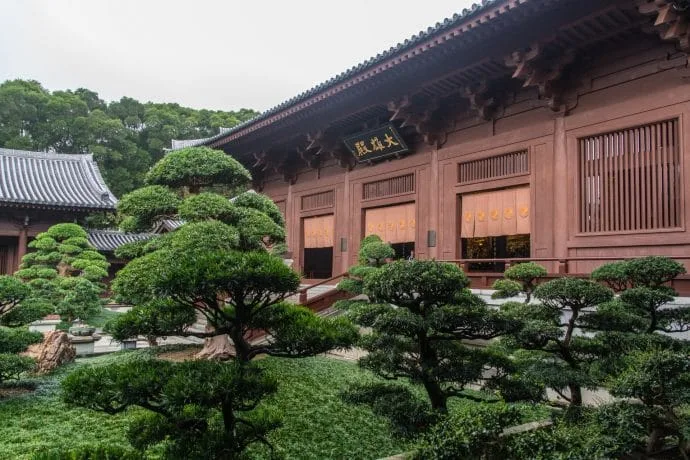
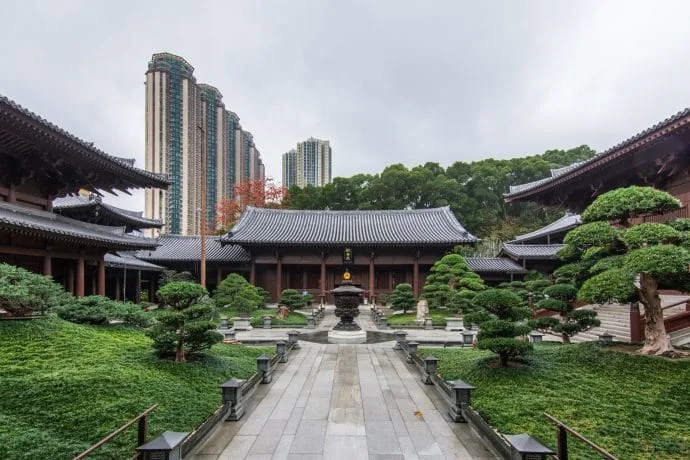
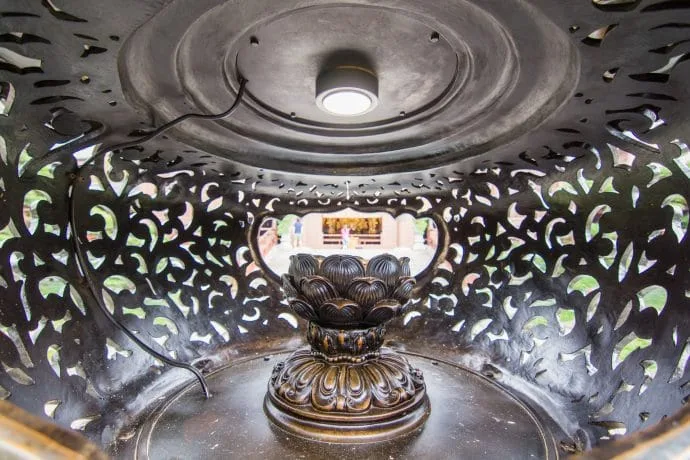
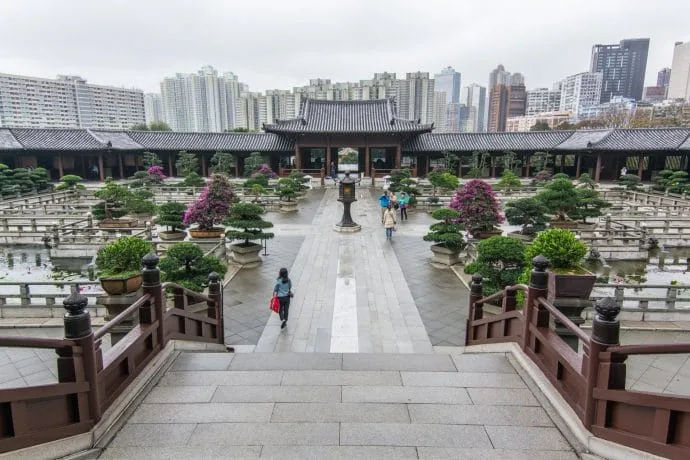
To sum up, even with rotten weather, it was still pleasant to stroll in this superbly landscaped garden, at least it was calm, no hustle and bustle, a real haven of peace in the heart of the urbanization.
Che Kung Temple
This temple, located in Tai Wai district (Sha Tin district in the New Territories), just north of the central area of Hong Kong, was built in honour of Che Kung, a general of the Southern Song Dynasty (circa 12th and 13th centuries).
His popularity was gained through his exploits such as escorting the last emperor of the Song Dynasty to the Sai Kung Peninsula (the part called the New Territories). It is also thanks to his ability to put an end to both revolts and epidemics, a true "miracle" worker earning him the status of a demigod (if not a full-fledged god...).
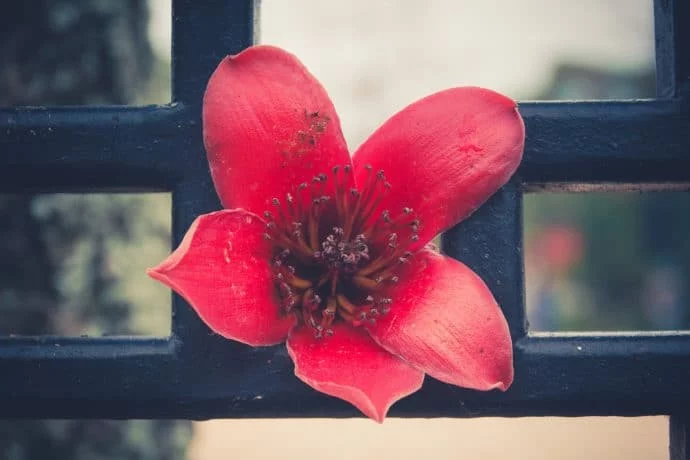
It was precisely at a time when an epidemic was raging in the region that the temple was built over 300 years ago. However, the current building is more modern following its renovation in 1993 (the last one being in 2004) and adapted to receive the many faithful, especially during the Che Kung festival which takes place on the second day of the Chinese New Year.
And among these faithful, many Thais. Very many. So many that that day, there were basically only groups of Thais whose routine was well organized, a real lucrative business... for the temple, and those who organize these visits.
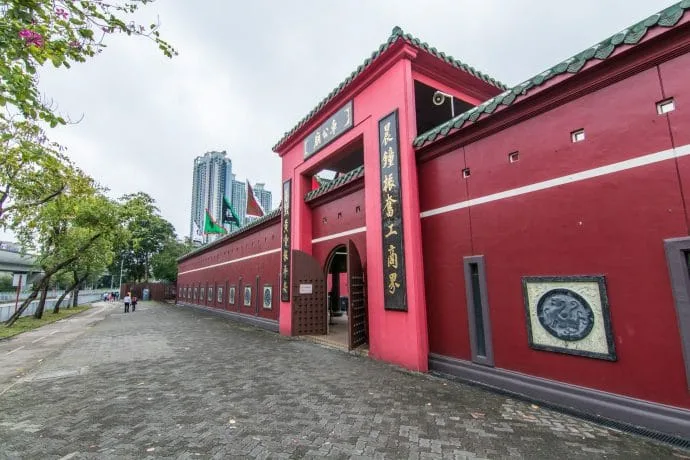
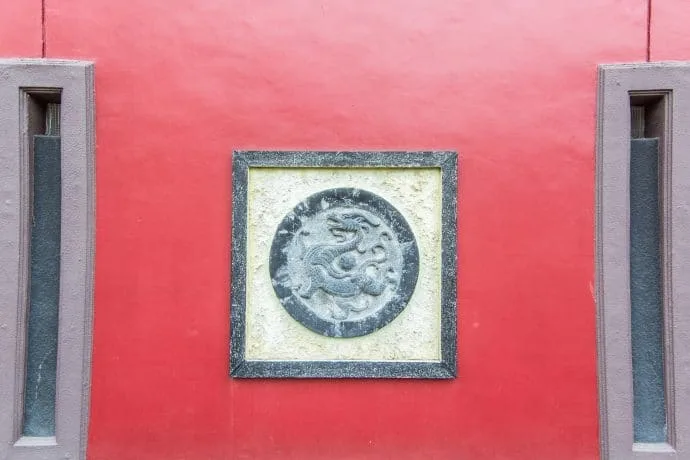
Since everyone has the right to "THEIR" visit, it was Jitima who decided that we should go to this temple, because of course, she had heard about it, that it brings good luck and therefore it is good for us. So be it.
After a few minutes of walking from Che Kung metro station, we arrived in front of the red temple enclosure. At the time, it seemed quiet from the outside, but what we saw was only the secondary door on the side of the temple and not the main entrance. And so we joined the happy troop of Thais who had just arrived by bus to go make an offering and spin the wheel of fortune (you couldn't make it up).


Of course, we buy the small offering kit (the basic kit, cheaper) available at the entrance. There are also fortune tellers who offer their services, to the left of the temple entrance. And after having fun observing all these people and finding out what to do, we went to the main building.
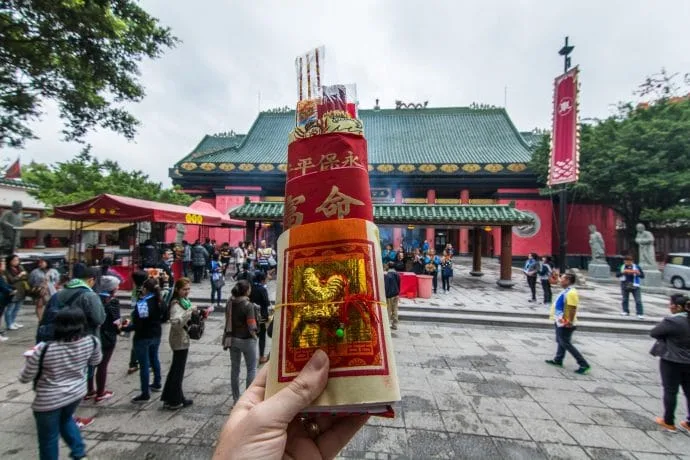
A giant statue of Che Kung sits on the altar. On each side, people line up to spin what looks like an old copper fan, you guessed it, the wheel of fortune. The idea is to spin this wheel 3 times while praying / making a wish to bring happiness and luck. Like a wheel that turns away bad luck, the wheel turns as they say, here, they take it literally. You can complete this process by hitting the large tambourine next to it to put all the chances on your side.
Another room on the left contains statues of deities (or personalities, I don't remember exactly) who are your protectors depending on your birth year. If you want to ask for a blessing, it's here. Back outside, the incense burns in a continuous stream, but at least it's quieter.
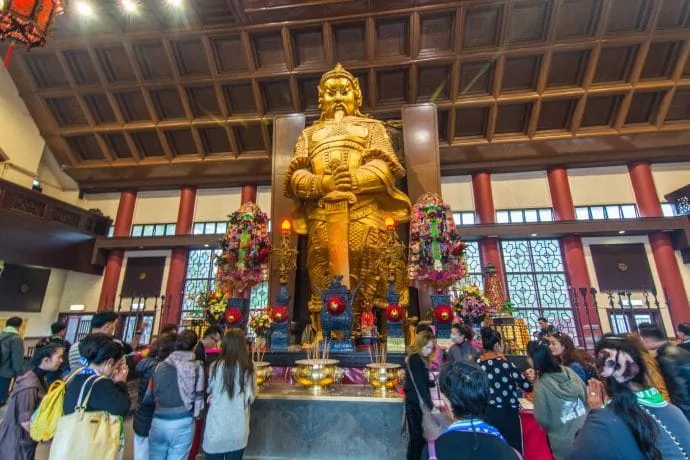
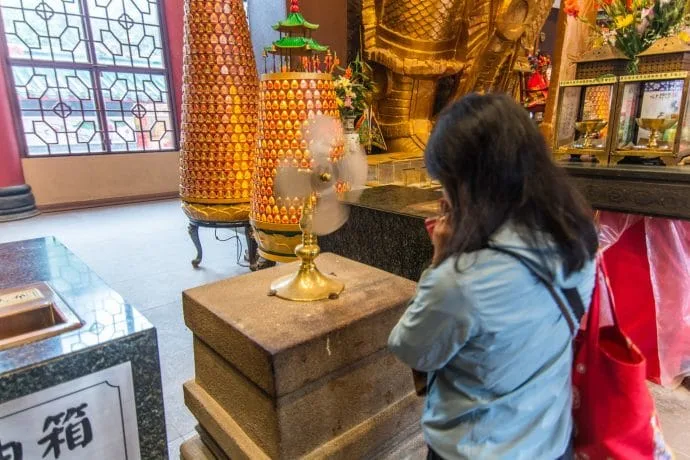
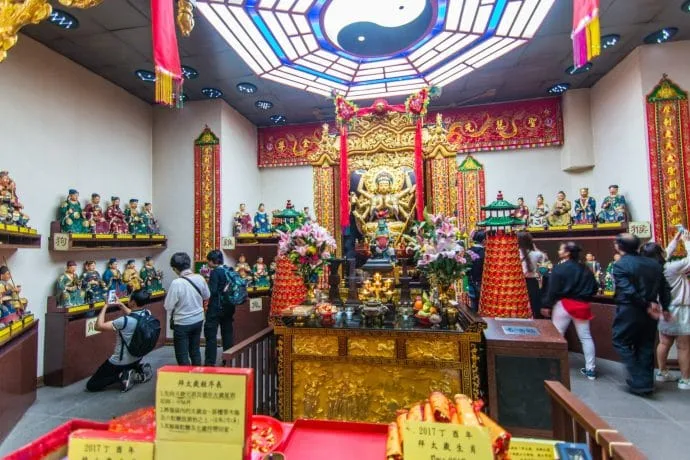
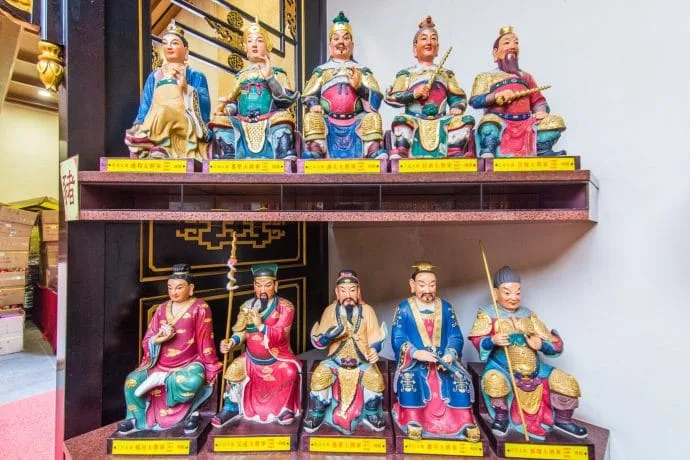
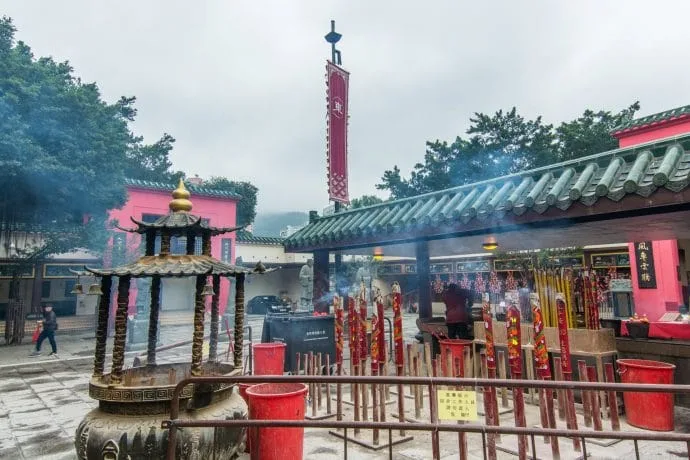
[sf_iconbox image= »ss-like » character= » » color= »standard » type= »standard » title= »Go to Nan Lian Gardens » animation= »none » animation_delay= »200″ link= » » target = »_self »]
subway (MRT), get off at Che Kung temple station, exit B following the signs to the temple. Note that it is also possible to exit at the station before Tai Wai since it will be the same distance on foot, about 10 min.
[/sf_iconbox]
Back to the docks of Hong Kong
To end this day, we returned to the Kowloon docks (next to the cultural center and the port) to admire the view of the skyscrapers of Central. A foggy view at the end of the afternoon, which gives a certain character, with some towers that had their heads in the clouds, when the neon lights of the others projected their brands/names to us as best they could.
As night falls, we finally decide to go for a little shopping session. We are then next to the Tsmi Sha Tsui district which lends itself well to it, some brands here being much cheaper than in Bangkok (generally around 20% less).
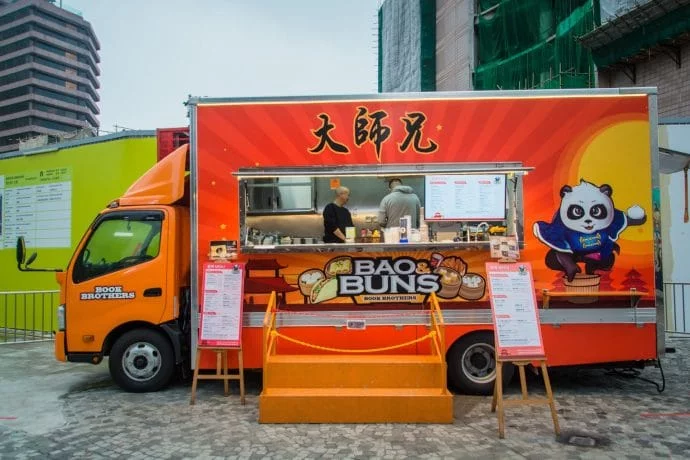

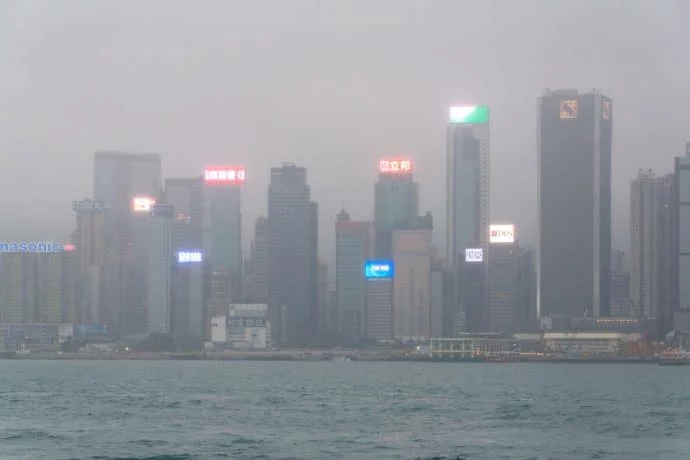
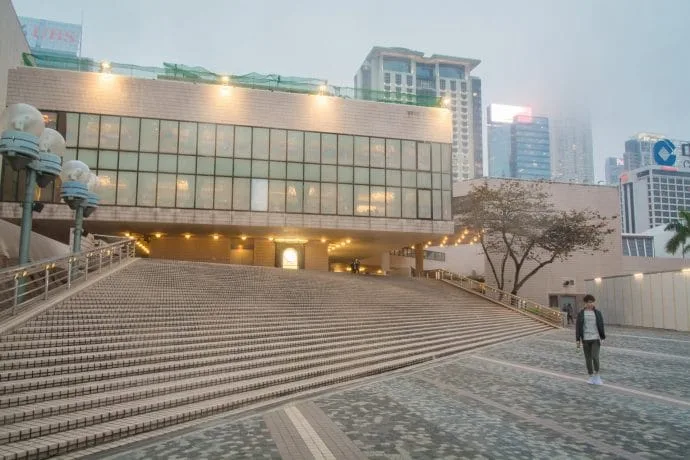
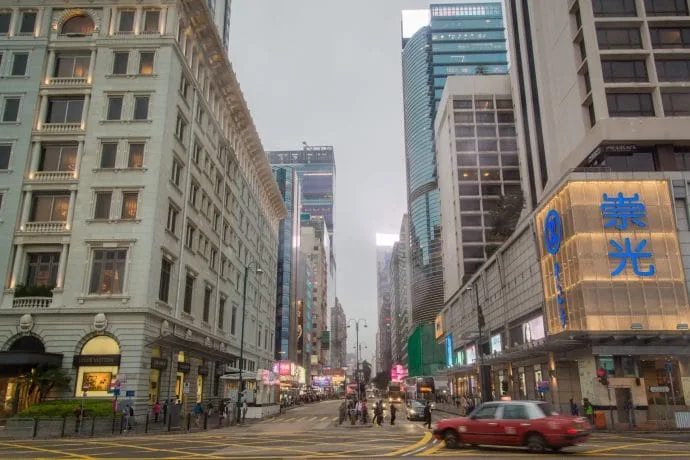
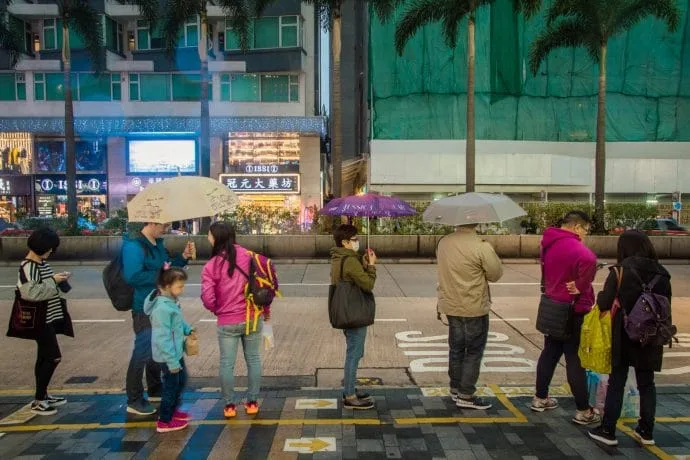
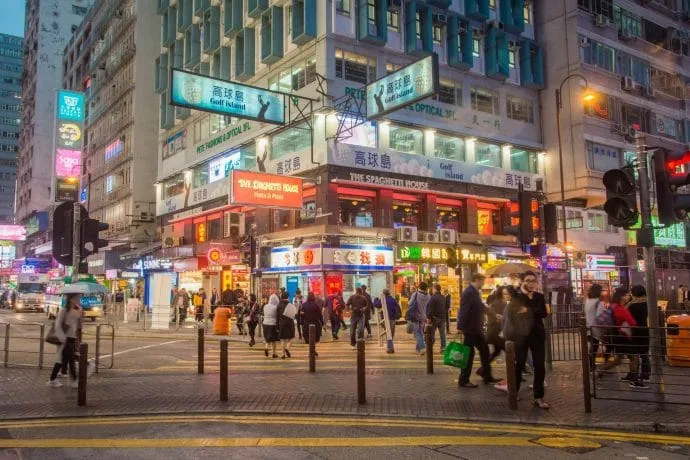
That concludes this day and especially concludes (finally) the articles concerning this first stay in Hong Kong. But since we returned 2 months later, there are others to come!
Did you like the article? share on Pinterest!



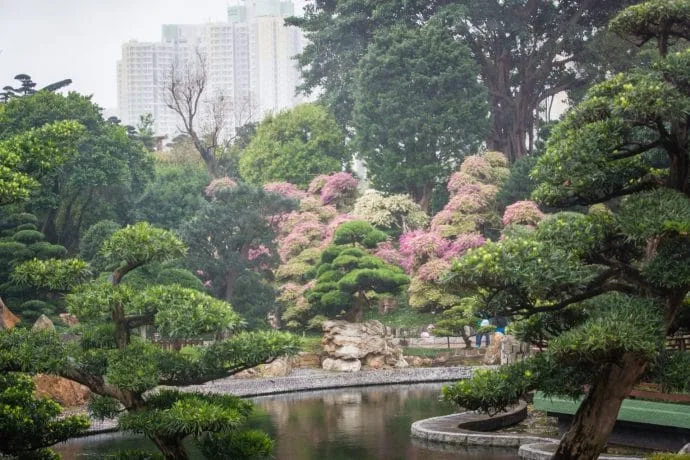
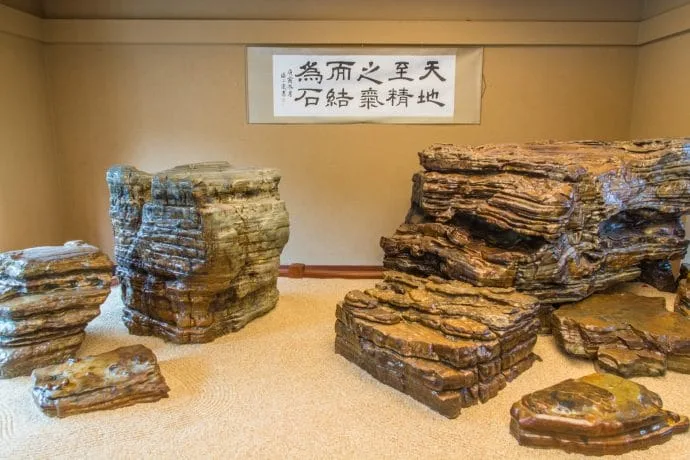
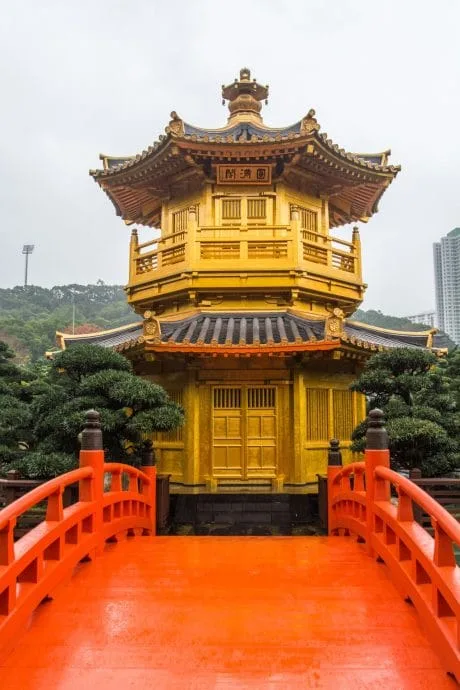
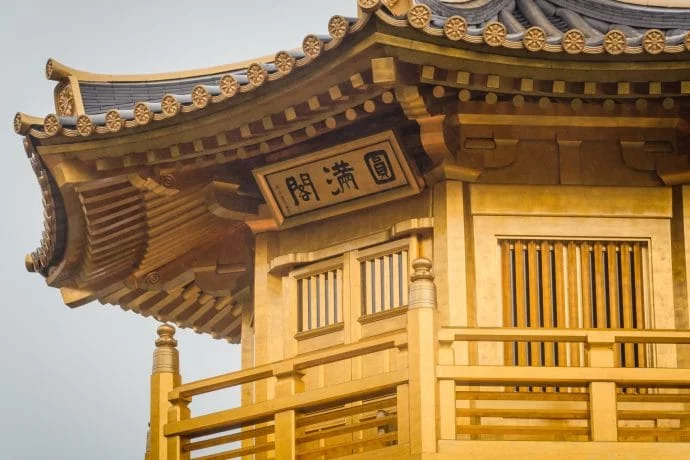
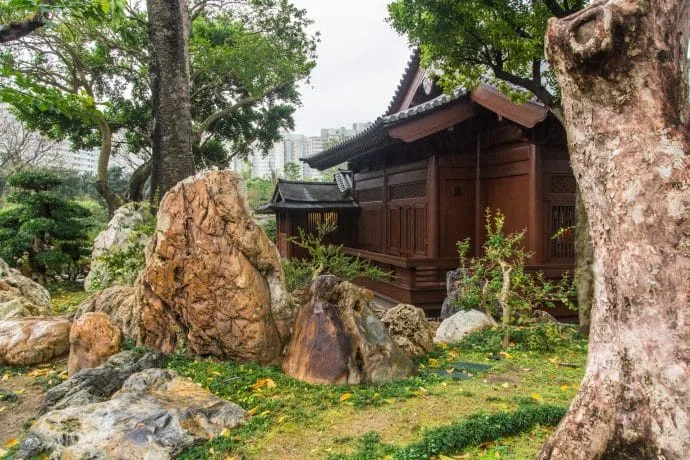
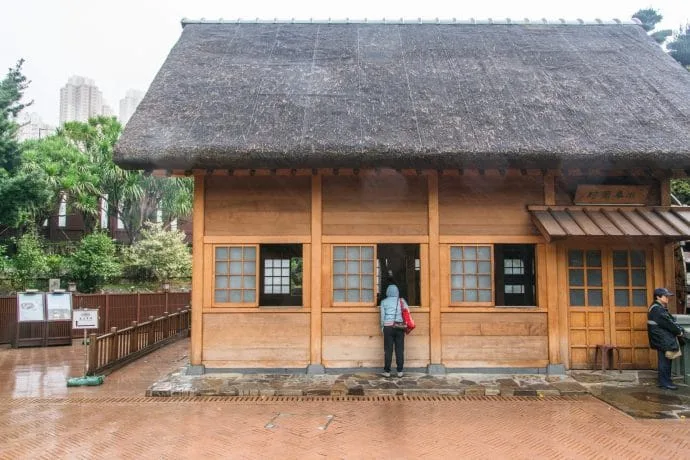

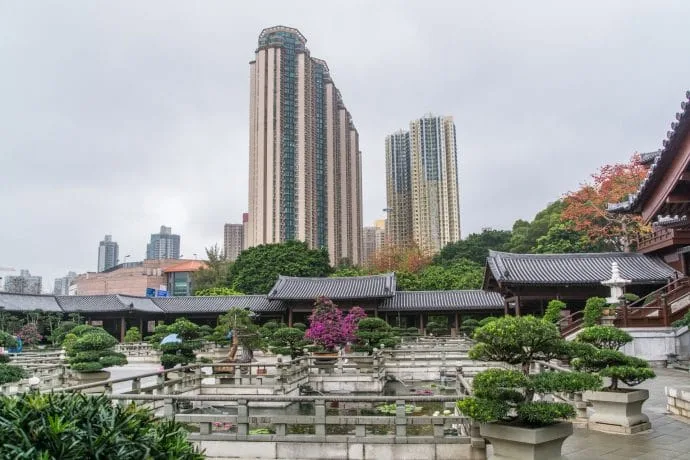

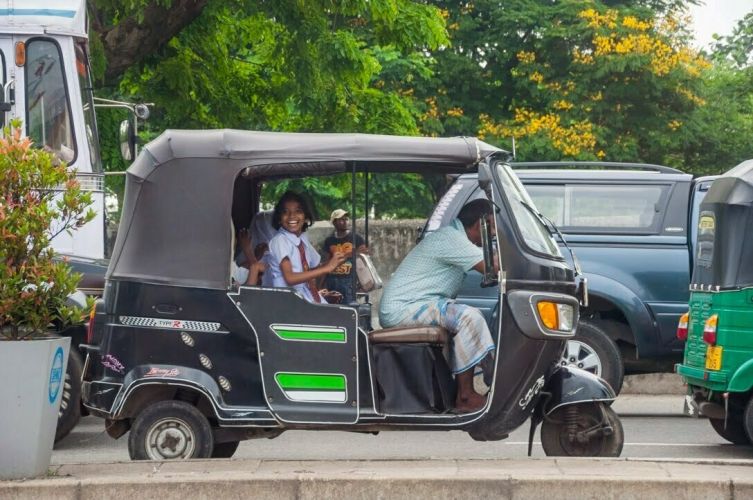

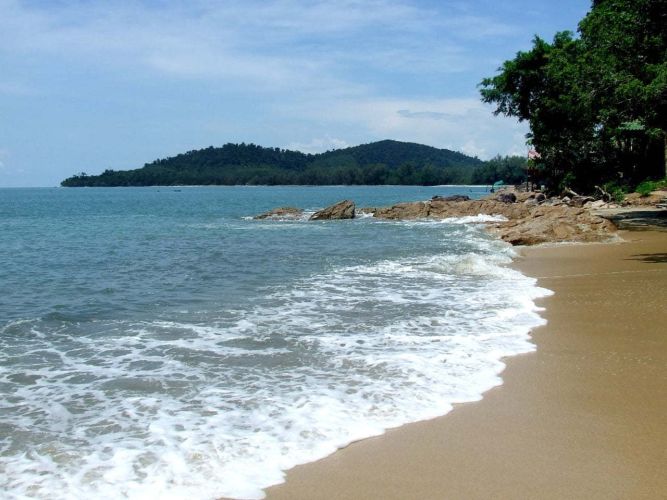
1 Comments
really beautiful, it makes you want to